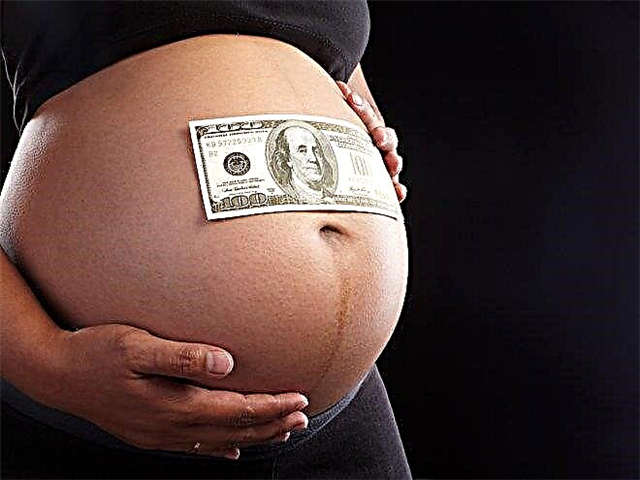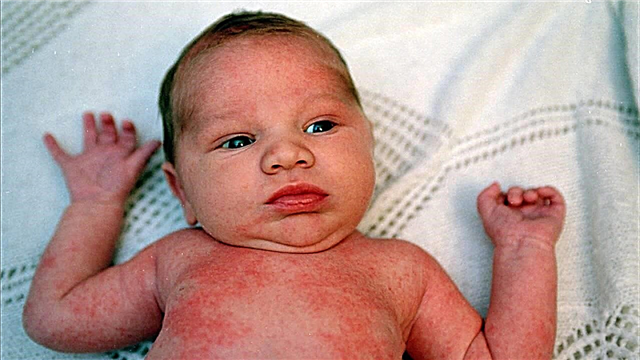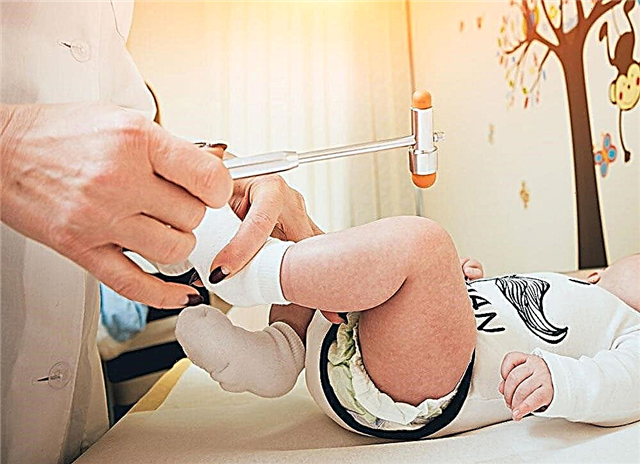
Diaper rash on the pope in newborns and infants is a very common phenomenon that even those parents who are trying their best to monitor the hygiene of the baby face. The more diligently the mother maintains the cleanliness of the buttocks and gluteal folds, the more questions arise when redness, rashes and other unpleasant manifestations of classic diaper rash appear.

What is it?
Unsightly redness on the bottom and between the buttocks in the baby, which called diaper rash, is a local inflammation... It is usually caused by contact of delicate baby skin with urea, ammonia and feces, as well as mechanical friction if the diaper or diapers are not matched properly.
The skin of babies up to one year old is much thinner and softer than that of other babies and adults. It is saturated with moisture faster, it is more vulnerable to any pathogenic bacteria, viruses and fungi. The condition of the baby's epidermis is easy to disrupt, because it is quickly injured even with ordinary daily procedures like massage.
The location of diaper rash on the pope is one of the most common.
With an advanced form of the inflammatory process, pyoderma develops. Sepsis may develop if the bacterial infection spreads.

Reasons for the appearance
In the inflammatory process on the buttocks and in the natural fold between them, the key role belongs to the violation of the water and lipid balance of the skin. Excess moisture triggers the process of inflammation in the epidermis, and sometimes in the deeper layers of the skin. Any moisture is dangerous, but urine should be noted separately, especially if it is combined with feces. Delicate baby skin suffers even with a short exposure to urea, ammonia, and fecal enzymes - lipase and protease. If the child has loose stools, the inflammation develops even faster and more severely.because liquid feces contain an acidic environment.
Thus, severe diaper rash on the priest is almost always the result of a violation of hygiene requirements for caring for a newborn. Prolonged exposure to a disposable diaper, even after a bowel movement, is the most common cause of unpleasant symptoms.
It is noteworthy that to develop diaper rash on the buttocks can also be caused by sweat... If the child is dressed too warmly, he sweats, and babies have their own, special thermoregulation. Sweat is a salty environment that is also highly irritating to the skin, especially in the gluteal fold.
The cause of unpleasant rashes on the bottom can be an uncomfortable diaper that does not match the size, rubbing the skin. Too tough diaper can also cause such mechanical diaper rash if the baby is swaddled.
The gluteal fold is deep, and therefore rubbing inside it is possible by itself, if there are factors predisposing to inflammation, then diaper rash is very, very likely. These factors, in addition to the violation of hygiene requirements, include an increased tendency to allergies. If a child has an allergic reaction to a new product on the menu, then often it begins with the priests... If a child is sick and has a high fever, then he sweats more profusely, and therefore diaper rash may well appear in the natural folds of the skin.

Risk group
Any mother can face diaper rash on the buttocks of a baby, but doctors have long noticed that there is a risk group, which includes children with similar symptoms, it is they who suffer from diaper rash more often than others:
- blond women with fair skin;
- overweight children;
- allergy sufferers;
- suffering from intestinal dysbiosis;
- suffering from intestinal infection;
- toddlers with kidney or bladder disease;
- premature babies;
- children who do not receive breast milk, but milk adapted formulas.


How to distinguish from other problems?
It is important for parents to learn to distinguish diaper rash in a child from possible other problems. In addition, diaper rash themselves on the priest may be different. Therefore, it is important to learn to understand what mom is dealing with in order to know how to act in a given situation.
In the vast majority of cases, with rashes on the pope, parents deal with diaper dermatitis... It is in the area where the skin was in contact with urine, feces, and the inflammatory process occurs. The redness can also spread to the baby's genitals. Diaper rash is not found either on the hands or on the legs.
If diaper rash in an infant is concentrated mainly near the anus, between the buttocks and on the buttocks, there is slight redness, then an allergy can be assumed. For its characteristic appearance, such diaper rash on the pope is often called an "allergic ring".
Localized inflammation of the deep gluteal fold alone is called intertrigo... The reason for it most often lies in sweating, excess moisture and mechanical friction.
Less often, red spots on the bottom look like clear, rounded, with roughness and increased fat content and swelling. This suggests seborrheic eczema. When a fungal infection is attached, the spots have a whitish coating, and with a bacterial complication, abscesses are almost always observed. Pustules that quickly burst and leave ugly crusts on the bottom are classic impetigo.

It is quite simple to distinguish diaper rash on the pope from other types of rash. Leave the baby without a diaper for a couple of hours. If the rash begins to lighten and disappear, this is a typical diaper rash. If the spots spread from the priests to other parts of the body, then an infection should be assumed.
It is also important to be able to distinguish between the degree of diaper rash on the priest.
- At the first - the skin is slightly inflamed, there are no weeping areas, the skin is intact, there are no wounds or cracks. The general condition of the baby does not suffer.
- In the second degree butt and gluteal fold are bright red with elements of erosion, there are cracks, wounds, pustules can be noticeable. The child is naughty, worried.
- Severe, severe third stage diaper rash - edematous, pronounced areas of red color, with cracks, eczema, ulcers. They are painful, the child's condition is disturbed, he cries, eats poorly, sleeps poorly. The temperature may rise, and this is a very alarming sign, which indicates a high probability of infection.
If the child has first degree, the mother can treat him herself, without the help of a doctor.
With the second and third degrees, it is imperative to call a doctor and receive a therapeutic appointment.

How to treat?
Small diaper rash on the priest of the first degree can be treated at home on your own, and without any special treatment, they go away quite quickly and easily. In most cases, it is enough to carefully evaluate the conditions of the baby's existence - is it hot in his room, are you wrapping the baby too much, does he sweat, do you always change his diaper on time (every 3-4 hours, and during bowel movements - immediately outside graphics).
Give your baby air baths - the skin must breathe... Baby cream can only be used to create a protective film on healthy skin. If diaper rash has already appeared, then it is forbidden to lubricate them with a fat baby cream.
Wash your child more often. Redness on the skin will help remove "Dexpanthenol" or "Bepanten". You can use folk remedies.

With the second degree of diaper rash on the priest, after consulting a doctor, the mother should create the favorable conditions described above. Treatment of inflamed skin areas implies treatment with preparations with a drying effect - for example, zinc oxide-based agents ("talkers" "Desitin", "Tsindol"). Pustules are treated with antibiotic ointments (for example, "Baneocin"). Food allergy to the pope needs antihistamine treatment.
In case of severe diaper rash of the third degree on the bottom of an infant, the doctor recommends medicinal lotions with silver nitrate, tannin solution, zinc paste, as well as aniline dyes - brilliant green, "Fukortsin" to prevent bacterial infection. If there are wounds or eczema on the pope, it is forbidden to sprinkle them with powder or smear them with fatty creams.
From folk remedies, which, by the way, are allowed only with the first degree of diaper rash, baths with a decoction of oak bark, string, chamomile are acceptable. It is forbidden to use iodine, even in a diluted form, you cannot smear diaper rash with honey, alcohol, sprinkle with tooth powder, treat with vegetable oils (the only exception is sea buckthorn oil). These measures will help you quickly get rid of mild diaper rash, while removing strong weeping diaper rash is much more difficult and longer. It takes time and patience to heal them. Common sense is needed to prevent reappearance.
The well-known pediatrician, doctor and TV presenter Yevgeny Komarovsky advises to be more careful about the choice of disposable diapers, to maintain optimal humidity in the apartment where the baby is growing (50-70%) at a maximum temperature of 21 degrees Celsius. If the child is still sweating, Komarovsky advises to be sure to bathe him and change his clothes to dry.
The doctor does not advise to abuse the products for the care of children's skin - they are useless for healthy skin.





